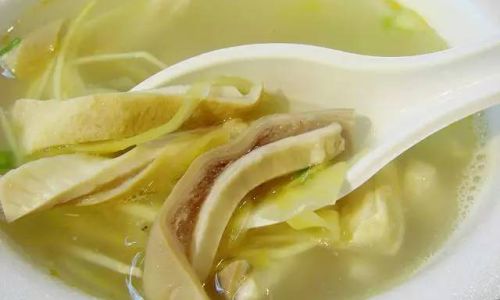Introduction
Pig’s stomach, also commonly known as pork tripe or simply tripe, is a popular ingredient in various cuisines worldwide. Its unique texture and flavor make it a staple in dishes ranging from hearty stews to delicate stir-fries. However, maintaining the freshness and quality of pig’s stomach after purchase can be challenging, especially if you’re not planning to use it immediately. In this comprehensive guide, we will explore various methods for preserving fresh pig’s stomach, ensuring that it retains its optimal taste, texture, and nutritional value until you’re ready to cook it.
Understanding Fresh Pig’s Stomach
Before diving into preservation techniques, it’s crucial to understand the nature of fresh pig’s stomach. Pig’s stomach is a muscular organ that requires proper handling and storage to prevent spoilage. It’s highly perishable due to its high moisture content and rich nutritional profile, which includes proteins, fats, and various vitamins and minerals. Improper storage can lead to bacterial growth, causing the stomach to deteriorate quickly.

Initial Preparation
Before preserving fresh pig’s stomach, it’s essential to clean and prepare it properly. This involves several steps to remove any impurities, fats, and odors that could affect its shelf life and overall quality.
-
Rinsing: Start by rinsing the pig’s stomach under cold running water to remove any external dirt or debris.
-
Trimming: Use a sharp knife to trim away any excess fat, membranes, or connective tissue. This not only improves the appearance of the stomach but also helps in even cooking and better preservation.
-
Internal Cleaning: Turn the stomach inside out and thoroughly clean the inner lining. This can be done using a combination of salt, vinegar, or lemon juice, which help to neutralize odors and remove stubborn impurities.
-
Rinsing Again: Once cleaned, rinse the stomach thoroughly under cold water to remove any cleaning agents or residues.
-
Pat Drying: Pat the stomach dry with paper towels or a clean cloth to remove excess moisture. Moisture can promote bacterial growth, so it’s important to ensure the stomach is as dry as possible before storage.
Refrigeration
For short-term preservation, refrigerating fresh pig’s stomach is the simplest and most effective method. Here’s how to do it correctly:
-
Airtight Container: Place the cleaned and dried pig’s stomach in an airtight container or heavy-duty plastic wrap. This helps to prevent air exposure, which can lead to oxidation and spoilage.
-
Labeling: Label the container with the date of storage to keep track of how long the stomach has been refrigerated.
-
Proper Compartment: Store the container in the coldest part of your refrigerator, typically the bottom shelf. Avoid placing it in the door compartment, where temperature fluctuations are more frequent.

-
Shelf Life: Fresh pig’s stomach can be kept in the refrigerator for up to 2-3 days. Beyond this period, the risk of bacterial growth and spoilage increases significantly.
Freezing
For longer-term preservation, freezing is the recommended method. Freezing slows down the growth of bacteria and other microorganisms, effectively extending the shelf life of fresh pig’s stomach. Here’s a step-by-step guide to freezing pig’s stomach:
-
Portioning: Before freezing, divide the pig’s stomach into smaller portions. This makes it easier to thaw and use as needed without wasting any food.
-
Freezer Bags or Containers: Use freezer-safe bags or containers to store the portions. Freezer bags are particularly useful because they can be sealed tightly, minimizing air exposure.
-
Removing Air: Remove as much air as possible from the freezer bags before sealing them. You can use a straw to suction out the air or a vacuum sealer for even better results.
-
Labeling and Dating: Clearly label the bags or containers with the date of freezing. This helps you keep track of how long the pig’s stomach has been stored and ensures you use the oldest portions first.
-
Proper Placement: Place the sealed bags or containers in the freezer, ensuring they are not crammed together or stacked too high. This allows for even freezing and easier access when needed.
-
Shelf Life: Properly frozen pig’s stomach can be stored for up to 6 months, maintaining good quality. Beyond this period, the texture and flavor may start to degrade.
Thawing and Using Frozen Pig’s Stomach
When you’re ready to use the frozen pig’s stomach, thawing it correctly is crucial to ensure it retains its quality. Here are some thawing methods:
-
Refrigerator Thawing: The safest and most recommended method is to transfer the frozen portions to the refrigerator and allow them to thaw slowly overnight. This method preserves the texture and flavor best.

-
Cold Water Thawing: If you need to thaw the pig’s stomach more quickly, submerge the sealed bag or container in a bowl of cold water. Change the water every 30 minutes to maintain its cold temperature. Avoid using hot water, as this can cause bacterial growth and alter the texture of the stomach.
-
Microwave Thawing: As a last resort, you can use the defrost setting on your microwave. However, this method should be avoided if possible, as it can lead to uneven thawing and partial cooking of the stomach.
Once thawed, use the pig’s stomach immediately or store it in the refrigerator for no longer than 24 hours. Do not refreeze thawed pig’s stomach, as this can compromise its quality and safety.
Additional Preservation Tips
-
Avoid Cross-Contamination: Always handle fresh pig’s stomach separately from other foods to prevent cross-contamination. Use separate utensils, cutting boards, and containers for raw meats.
-
Proper Hygiene: Wash your hands, utensils, and surfaces thoroughly after handling raw pig’s stomach to prevent the spread of bacteria.
-
Smell and Inspect: Before cooking, always inspect the pig’s stomach for any signs of spoilage, such as an unpleasant odor, sliminess, or discoloration. If any of these signs are present, discard the stomach immediately.
-
Cooking to Safety: Ensure the pig’s stomach is cooked to an internal temperature of at least 145°F (63°C) to kill any harmful bacteria that may be present. Use a food thermometer to check the internal temperature accurately.
Conclusion
Preserving fresh pig’s stomach requires careful handling and storage to maintain its quality and safety. By following the methods outlined in this guide, you can enjoy fresh, delicious pig’s stomach for days or even months after purchase. Whether you choose refrigeration for short-term storage or freezing for longer preservation, proper preparation, packaging, and thawing techniques are key to ensuring that your pig’s stomach retains its optimal taste, texture, and nutritional value. With these tips, you can confidently incorporate pig’s stomach into your culinary creations, knowing that you’re working with the freshest, highest-quality ingredient possible.






0 comments